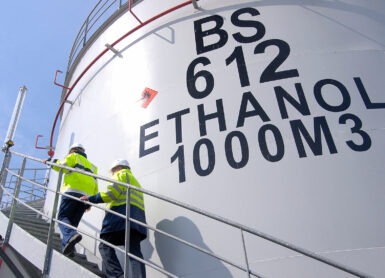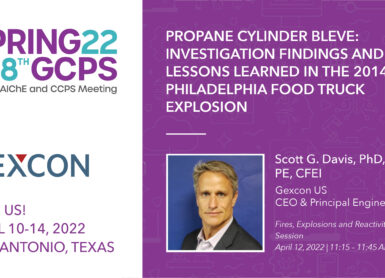
As the world moves towards decarbonization, natural gas is finding its place as a cleaner-burning alternative to other fossil fuels.
For safer storage and transport, natural gas can be cooled down to its liquid form – LNG. However, facilities handling LNG, such as liquefaction plants, regasification plants, and storage facilities, are still associated with potential hazards. Understanding these hazards is essential to implementing the necessary prevention and mitigation measures.
A key risk in LNG facilities is an uncontrolled release of a cryogenic, toxic, or flammable fluid. Such releases can originate in various parts of the process system. The consequence of these releases depends on what they expose and on whether they are ignited. In short, the essential LNG facility hazards can be grouped into seven categories.

Temperature
- Cryogenic liquid releases that cause embrittlement if they expose materials not designed to handle such releases, and freeze burns if they expose personnel.
- Hot vapor releases from turbines, boilers, and engines for power and heat generation.
Toxic
Hydrogen sulfide H2S or ammonia releases that are toxic.
Asphyxiation
Nitrogen oxide, carbon monoxide, carbon dioxide, or sulfur dioxide releases that replace oxygen in an area and could cause asphyxiation.
Pool fire
Liquid releases that form a pool on the ground or water and ignite, creating a potentially long-lasting pool fire.
Jet fire
Pressurized gas or liquid releases that ignite, creating a high heat flux jet fire.
Flammable vapor dispersion/ flash fire
Gas or liquid releases that form a flammable cloud in an open area, and ignite, causing a short and intense flash fire that is harmful to personnel.
Vapor cloud explosion (VCE)
Gas or liquid releases that form a flammable cloud in a congested or enclosed area, and ignite, causing an explosion and a pressure wave.
Interested to learn more about hazards in LNG facilities?
In a recent Gexcon webinar, Drew Botwinick (Managing Risk Consultant at Gexcon US) provided a comprehensive overview of LNG facility hazards. Actual testing videos were utilized to help webinar participants visualize and understand the physical consequences and potential exposure caused by the hazards.
You can get a free recording of the webinar “Do you know the 7 essential hazards in LNG facilities?” using the link below.
Do you like what you read?
Get the latest trends in the field of process safety management straight to your inbox, and enhance your skills through knowledge sharing from industry experts.


